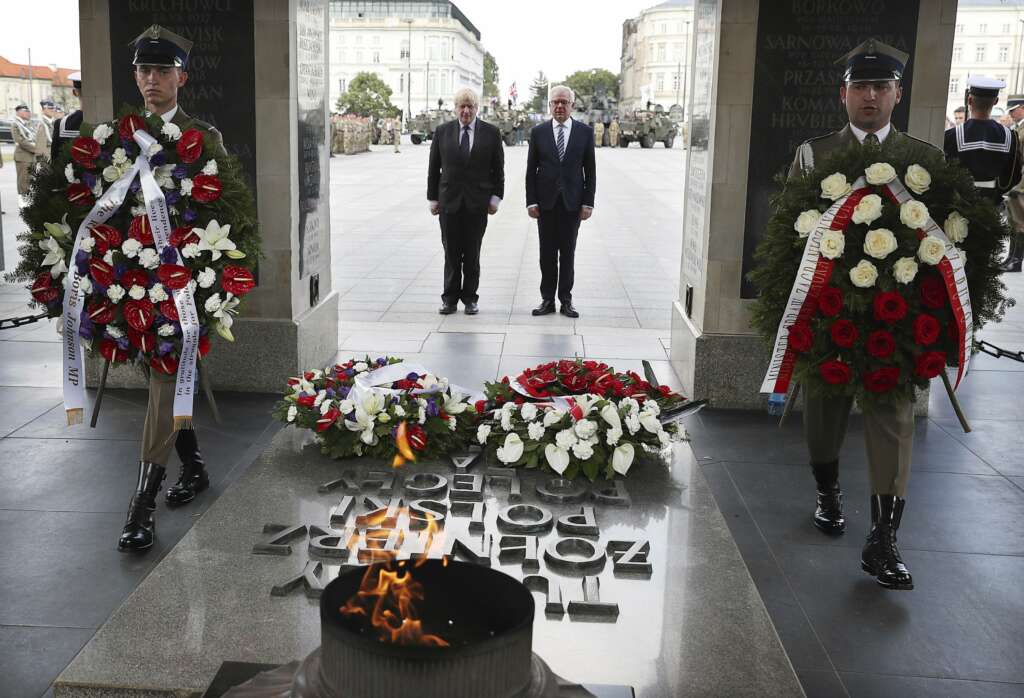
WARSAW, Poland (AP) — Poland is reviving plans to reconstruct a historic Warsaw palace where the German Enigma machine codes were first cracked in 1932 and which Nazi German occupying forces blew up in 1944.
In a ceremony Wednesday at the empty site where the Saski Palace stood, President Andrzej Duda handed a law drafted by his office for the reconstruction of the huge 17th century building to the speaker of parliament, Elzbieta Witek, for processing.
Duda said that although costly, the project will symbolically close the decades-long process of rebuilding the historic center of Poland’s capital from World War II damage. He didn’t provide a cost estimate.
“Warsaw was being rebuilt for many, many years after the war, in times of poverty, of very modest living conditions, at the cost hard toil, and sweat and blood of the workers, the capital city was being raised from ruins,’ Duda said.
“That was also the story of the Royal Castle, which today is a beautiful symbol of Warsaw,” Duda said, adding that he is sure today’s Poland can afford to rebuild the Saski Palace.
When completed in 2028, the palace would house culture and history projects, under the plan. But first, the lower house of parliament and the Senate need to approve the project.
Built in 1661, the palace was repeatedly redesigned and served various purposes. In 1930-37 it housed the Polish Armed Forces’ Cipher Office where in 1932 three mathematicians, Marian Rejewski, Jerzy Rozycki and Henryk Zygalski, cracked the Enigma encoding machine. This laid the foundations for the wartime breaking of its codes in Britain, which greatly assisted the Allies’ war effort by allowing them to read top-secret German communications.
During the war, the German Wehrmacht had its headquarters at the Saski, or Saxon, Palace. Nazi troops blew it up in December 1944, while destroying Warsaw after a dramatic, failed uprising by the Polish resistance movement in which some 200,000 residents and fighters were killed.
Today, only the central colonnade remains that contains the Tomb of the Unknown Soldier, where visiting foreign leaders lay wreaths.
The laborious rebuilding of Warsaw from ruins, street by street, started right after the war, under the imposed communist government, with the focus on housing, but also of some landmarks. In 1984, the 14th century Royal Castle, reconstructed thanks to funds from a nationwide collection, was opened to visitors.
Plans to have the Saski Palace rebuilt have been made ever since the war’s end and most recently in the early 2000s, when its foundations and some other elements were uncovered. The plan was scrapped among expected high costs, and also because experts said the old foundations were too weak to be built on.
Copyright © 2021 . All rights reserved. This website is not intended for users located within the European Economic Area.
